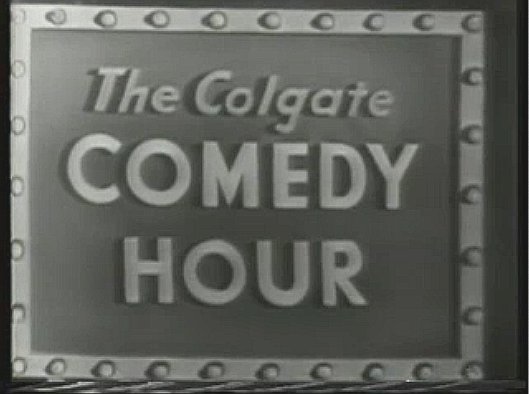The Colgate Comedy Hour was one of the most popular TV shows during the dawn of television. The weekly program showcased musical and comedic talents of many of the most famous stars and entertainers back in the day. It ran for six seasons (1950-1955).
The show proved to be so popular that it even managed to surpass its rival The Ed Sullivan Show, which was then known as Toast of the Town. As a matter of fact, The Colgate Comedy Hour also held the Sunday 8:00 pm slot, the same time that Toast of the Town also occupied.
Development
The Colgate Comedy Hour was actually developed from another show, Four Star Revue, which was sponsored by Motorola. In 1950, NBC made a deal with Colgate-Palmolive as the TV network had plans of re-formatting the show; it premiered on September 10 that same year. As the name suggests, the show heavily dealt with comedy sketches, which were interspersed with some singing and dancing numbers. The format may be just any ordinary comedy-musical variety show, but the The Colgate Comedy Hour‘s considerable budget and big-name guest stars made sure that it would be a big hit among TV audiences.
Celebrity guests and hosts
Like many television programs at the time, The Colgate Comedy Hour presented many former vaudeville stars, as vaudeville was fast becoming obsolete. In addition to ex-vaudeville stars, The Colgate Comedy Hour also presented well-known Broadway performers as well as movie stars and radio personalities who would take turns in their hosting duties. Among the most famous celebrities who hosted and/or guested on the show included Frank Sinatra, Dean Martin, Eddie Cantor, Ethel Merman, Bob Hope, Donald O’Connor, Jerry Lewis, Abbott & Costello, Jackie Gleason, Fred Allen, Milton Berle and Jimmy Durante, among many other Hollywood celebrities who contributed to The Colgate Comedy Hour‘s success. Oscar-winning actor Christopher Walken even appeared on the show as a child talent.
TV trailblazer
The Colgate Comedy Hour was pretty much a TV trailblazer during its heyday. First, it was the first television program to be broadcast live, from coast-to-coast. Second, it was among the first shows to be broadcast in the NTSC color system. And because The Colgate Comedy Hour was aired live, several unexpected things happened just as they were, such as actors forgetting their lines (and sometimes choosing to ad-lib them as a result).
Final years
The show did not last that long on the air, and many factors contributed to its decrease in ratings and viewership. One, its rival The Ed Sullivan Show got even more popular. Another, health issues forced certain stars (such as Cantor and Lou Costello) to miss several episodes. For a TV show whose identity was closely associated with its hosts, that proved to be catastrophic blow.
In what could be the show’s final season (1955), The Colgate Comedy Hour underwent some changes and was re-titled as The Colgate Variety Hour, as it attempted to provide more diverse kinds of entertainment – it even featured a Mexican jai alai game once. It was also doing on-the-road shows as well, and that move was an altogether different and unusual turn for a TV show at the time.
As many of The Colgate Comedy Hour‘s regulars moved on to star on their own shows, only a few of them stayed on the program but they otherwise appeared less frequently. The show was steadily losing its appeal, and eventually Colgate-Palmolive withdrew its sponsorship. On Christmas day 1955, The Colgate Comedy Hour bid farewell with its final broadcast.
But at least for its part, The Colgate Comedy Hour paved the way for many of its stars and other behind-the-scenes talents to make an even bigger mark in the entertainment industry.

